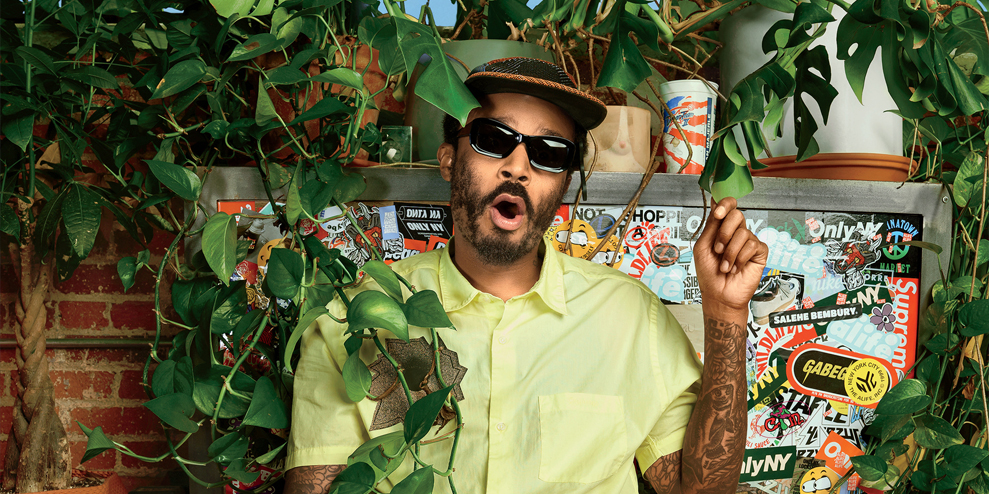Salehe Bembury is the preeminent designer to emerge from sneaker culture. How he’s putting his fingerprint on footwear and fashion—and getting his REI on.
It’s impossible to walk with Salehe Bembury and not stare at everyone’s feet.
The asphalt is stick-to-your-soles hot as Bembury, one of the most famous shoe designers on the planet, threads his way through the stalls of Pasadena, California’s legendary Rose Bowl Flea Market where, once a month for the last 50 years, designers like Christian Louboutin have gone elbow-to-elbow with bargain hunters in search of unique treasures. The thousands of stalls filled with millions of knickknacks feel, in many ways, more oppressive than the blacktop, a seemingly endless array of faded Yu-Ghi-Oh tees and frayed Lakers jerseys, mid-century dining tables, and 35 mm-era Olympus point-and-shoots. But as we walk, a quick glance beneath the card tables reveals a whole other world, a tacit language gestured through our footwear.
Gen Z goths and Gen X home-improvement types rock the same black Vans Old Skools (though in the latter case, they’re bruised and ripped at the seams). The millennials-with-a-job wear stock Air Max 90s and Yeezy 350s. Then there are the hypebeasts who have chosen something quirkier to signal their elevated taste. When we turn a corner, three young men are waiting—wearing, respectively, mint-condition Midnight Navy Nike Dunks, Off-White x Jordan 5 SP “Sails,” and turquoise New Balance “Water Be the Guide” sneakers—and that’s when I realize that this group isn’t here by coincidence.
I’m a professional design writer, and I can’t tell you who designed my car, my couch, my refrigerator, my home. But I do know that the 6-foot-3 man standing next to me created those shaggy-textured New Balances, as does everyone else in that group. They can also tell you that it’s the second most sought-after color combination of his reinterpretation of New Balance’s 2002R shoe, meaning it’ll run you about $300 on a resale site. The most coveted version—Bembury’s Peace Be the Journey, which captures the golden hues of Antelope Canyon—can fetch more than double that.
Bembury’s fans are the freshest dorks the eye has ever seen. They don’t ask, “Are you Salehe Bembury?!?” before sheepishly requesting a selfie because they already know—recognizing Bembury from his Instagram posts, where he’s grown his follower count from virtually a standing start to more than 541,000 in the past two years, and confirming his celebrity by the shoes he’s wearing. Not just his impossible-to-get Crocs Pollex, but Pollex in the black “Sasquatch” colorway, which at this moment, haven’t yet shipped to the public. (Another tell: Bembury is conspicuously holding a just-purchased, single size 22 high-top that was made for the one person who could wear it, Shaquille O’Neal.)
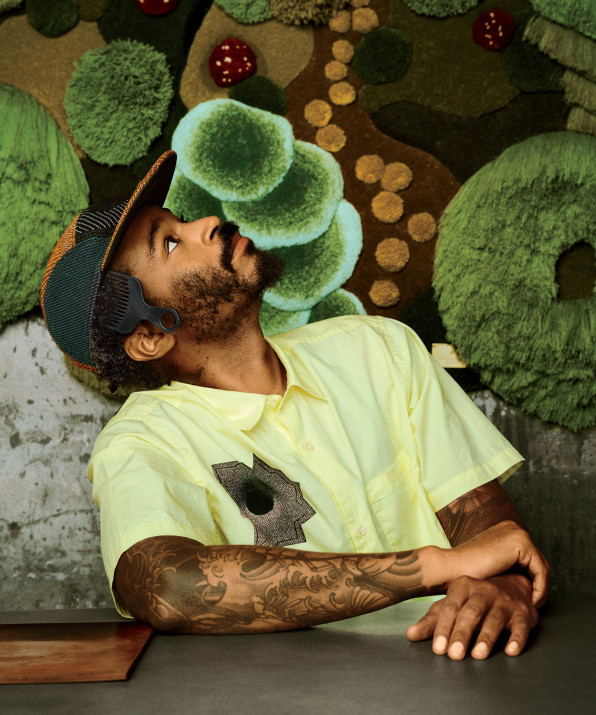
Bembury, who carries himself with a contemplative presence, perks up, smiles, and leans in for some photos. Only afterward does he confess to me how uncomfortable he is with his new recognizability, how the only time strangers usually come up to you to talk is when they’re drunk on Halloween.
“I low-key became famous during COVID. So it went from, like, no one knows who I was to, oh, lockdown is over, suddenly we can go outside again. And everyone’s like, ‘Salehe?’” Bembury says. “I’ve got a good poker face, but it just throws me because I’m not that far removed from being that person. I remember being at the Rose Bowl four or five years ago and seeing Jeremy Scott!”
Shoes are the only piece of apparel that keep their shape after you take them off—meaning sneakers are as much sculptures as they are clothing. Yet, as far as art goes, they’re relatively affordable, which is why sneakers have become such a democratizing cultural force of our era, driving a $127 billion global market. Constructed of high-performance materials that stretch around and support various parts of the foot with pinpoint accuracy, sneakers are also featherweight marvels of biomechanical physics. Whereas creatives of the 1960s dreamed of designing a chair, and in the 1990s and 2000s they strove to mold plastic and aluminum around consumer electronics, today they aspire to stamp their name on a sneaker. Bembury is the perfect embodiment of this new kind of celebrity industrial designer, as fluent in fashion as function.
To understand the significance of Bembury’s contributions to footwear, you need to understand how sneakers are made. The bottom of the shoe is generally created from molded foam, for bounce, while the top is crafted from one of countless types of stitched and woven textiles (necessary to conform to your rounded foot). To change a colorway—altering the hue of the fabric upper—is simple for most shoe companies. But to change a silhouette requires going back to the last (the technical term for a foot form) to fashion the upper, while developing new molds for the bottom “outsole.” This is a major undertaking within industrial production because it requires retooling an assembly line and making a four-to-five-figure investment for each individual size that’s offered, simply to build injection molds for each size of outsole. From a financial standpoint, the lazier a sneaker collab, the better for a company—especially because most sneaker collaborators are either fashion designers or celebrities: people who don’t actually know how to build a shoe in the first place.
Bembury has created new molds at Crocs and New Balance over the past few years, and his slate of 2022 collaborations includes other iconic or cult brands such as Vans and Brandblack. But Bembury’s ambition extends far beyond creating new silhouettes across the industry. While most industrial designers are inept when it comes to fashion (consider that Apple, the preeminent industrial-design firm, makes just one fashion-oriented product, the Apple Watch), Bembury is not, allowing him to turn the model of success inside out. Sneakers aren’t his reward for fame in another field but rather his foundation, his muse—from which he’s growing into outdoor gear, home goods, and high fashion. (The first work from his partnership with Moncler is slated for 2023.) “I think I’m always gonna introduce myself as a footwear designer, no matter what I make,” Bembury tells me, reflecting the primacy that sneakers hold in popular culture. “Yeah, there’s something nice about that.”
Slipping on Bembury’s Crocs Pollex is a strange sensation. The undulating, ridged mules, which he designed for the $2 billion–plus footwear brand and initially released in December 2021, feel less like wearing brand-new shoes made overseas than a fresh pair of feet shipped from another planet. The aesthetic invites the world to comment on your feet—and boy, do they comment.
Only when you walk through something forgiving—sand, water, a high-pile carpet—do you realize the degree to which Bembury has put his signature on the shoe. The Pollex’s impression left in your wake clearly resembles a thumbprint. Bembury’s, to be precise, for those in the know. So you’re not just making your own mark on the trails you blaze but you’re spreading Bembury’s. (Technically, the design is a combination of three of his fingertips, so you cannot hold up a Pollex to unlock Bembury’s iPhone.)
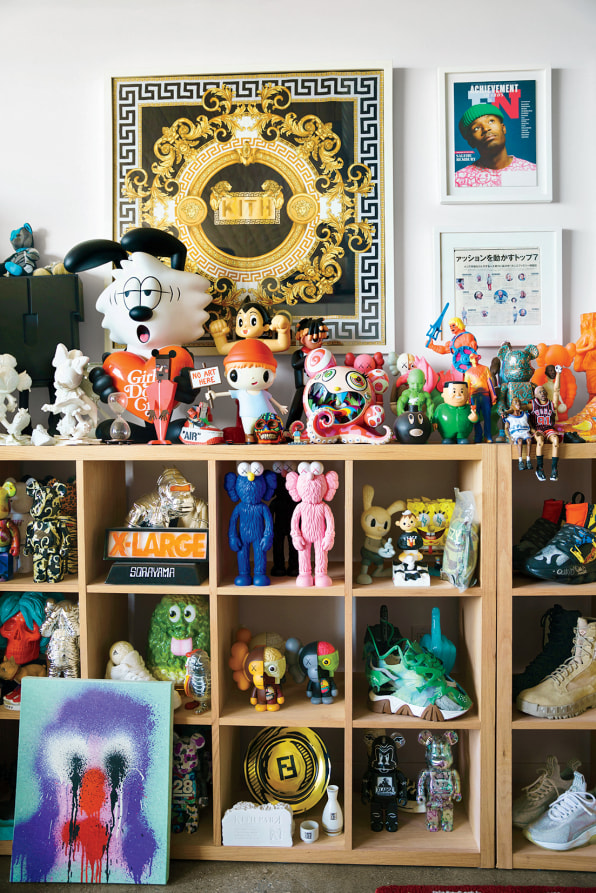
At the same time, the form of the Pollex contains its function. Bembury beefed up the Crocs’s treads to offer a surprising amount of grip, and reinforced its heel and toe with rubber to stand up better to wear. He chose a nylon strap for durability, and redesigned its connection joints like vintage military clips, a nod to the Pollex’s utilitarian function. He even tweaked the ventilation holes to ensure the wearer’s three smaller toes remain covered in the shoe. He went so far as to draw a diagram of the human foot to convince Crocs of this necessity, demonstrating that people’s first two toes are generally the most attractive, whereas the other three are often bent and unkempt.
“I don’t want to design this beautiful thing, and then the most raisin pinky toes are popping out of one of the holes,” he says, laughing, before noting that it’s a serious concern because a single bad photo of the Pollex could turn into a trend-killing meme on Instagram. When I point out that it sounds absurd for a shoe to be designed with the specific function to look good on the internet, Bembury doesn’t budge: “I would argue that you might actually pick up your phone before you look at your feet when you wake up.”
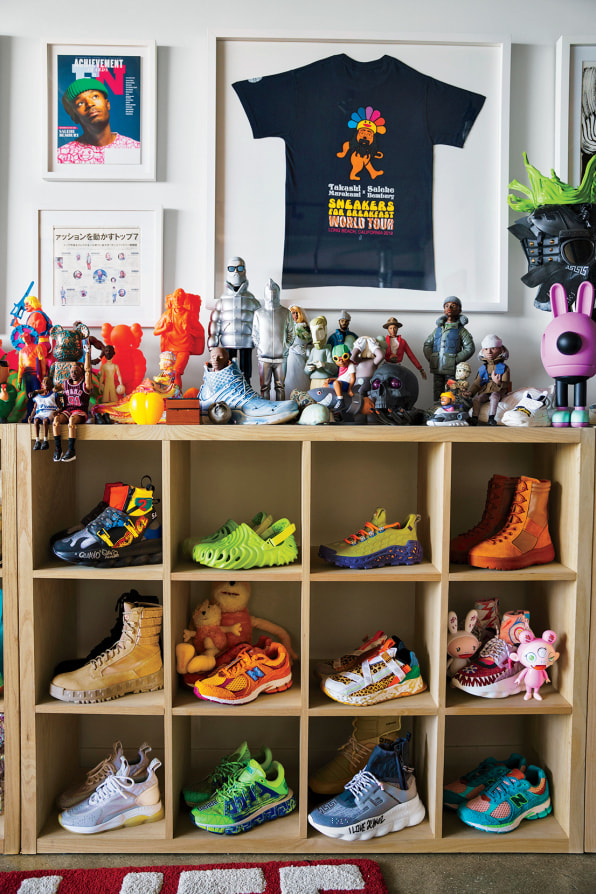
Since Crocs launched, in 2002, it has relied upon the same Danish clog mold—and Bembury was the first external designer offered the license to change it. But what few people realize is that Crocs are a uniquely made shoe: They’re created from molded EVA foam that eschews stitching and fabrics for cheap and easy injection-molded production. Not until Bembury’s former employer Yeezy debuted the landmark Foam Runner—three years after Bembury left Yeezy and almost 20 years after the original Croc debuted—did anyone take that technology and create a significant new silhouette that would be impossible to produce through other production methods.
Once the industry went to foam, shoes became clay, and no designer has seized on the opportunity created by this revolution more than Bembury. No shoe has encapsulated that fact better than the Pollex, which followed Ye’s streamlined, future-forward design with that biological ripple inspired by his fingerprints. Whereas the Foam Runner counterintuitively popularized Crocs, doubling the company’s revenue since 2019, the Pollex popularized a new wave of organic clogs in 2022.
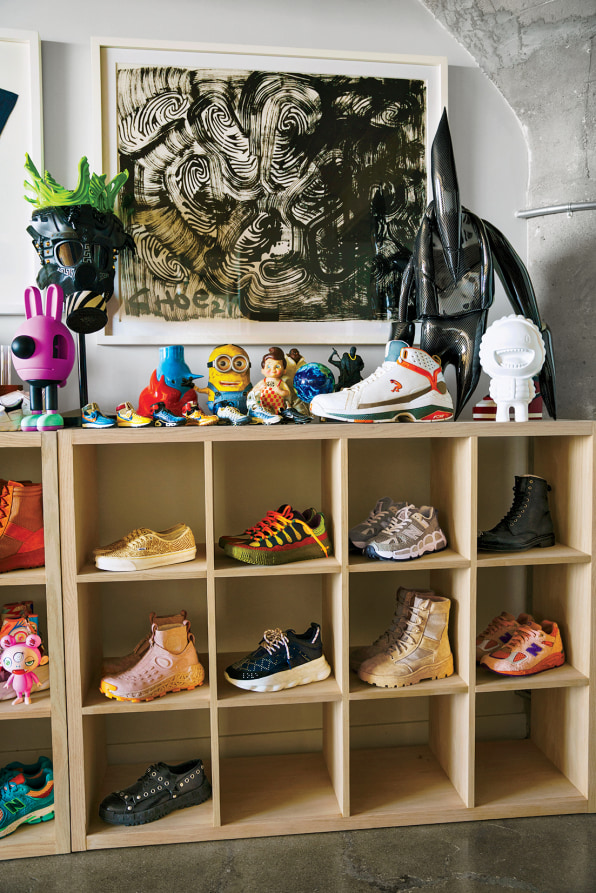
During the reporting of this story this spring and summer, I watched the impact that the Pollex had on the market. Half a dozen imitative products cropped up from shameless shoe labels—even Crocs itself. “[It’s] like they gave it to an associate designer, and they’re like, ‘Hey, design a Croc that’s inspired by the Pollex, but it doesn’t look like the Pollex,’” says Bembury. “I was like, ‘Holy shit, they just took my design identity and, like, bastardized it.’”
Instead of stewing, Bembury confronted Crocs brand president Michelle Poole directly, later telling a fan who asked about the similarities on Instagram that “I recently spoke to [her]about it privately.” Crocs declined to make an executive available for this article, but a spokesperson offered a statement from Poole praising Bembury for “embracing innovation.” Ultimately, Bembury found peace, recognizing that Crocs is promoting his shoe more than the knockoff.
Bembury was obsessed with objects from an early age. He recalls being besotted by one of the first “As Seen on TV” products: the Penalli Pen Set, a plebeian fountain and ballpoint pen kit bundled with replacement parts that he bought with his own money. “Surely no teenager was buying pens!” Bembury exclaims. “That was some shit that only a designer would do.”
Coming of age in 1990s New York City—Bembury grew up in Tribeca, with a father who was a photographer and mother who, despite working in the corporate world, “really aggressively encouraged individuality and creativity”—sneakers were naturally his favorite. At the time, shoe fanatics existed in a speakeasy streetwear culture, tracking down hidden storefronts that sold deadstock or that served as proto pop-up stores selling limited-edition offerings. But Bembury didn’t just want to collect the shoes; he wanted to make them.
With the aspiration to one day become an anonymous associate designer at Nike, Bembury majored in industrial design at Syracuse University, learning how to create goods for mass production. The first object he ever designed was for his senior thesis: the whimsically named “U-shi Sushi knives.” He lathed the blades by hand, and built a handle that allowed a sushi chef to change its texture, weight, and color.
Bembury was ecstatic when he landed his first job designing shoes at Payless in 2009. He then did stints at the direct-to-consumer brand Greats and Yeezy, before spending three years building Versace’s sneaker business from scratch. Bembury landed the job after reaching out to the company on LinkedIn, and working with just a single assistant, he went on to release dozens of Versace sneakers—including the haute Chain Reaction (2018), which featured a marshmallowy outsole imprinted with a Cuban link chain that GQ lauded as “the waviest sneaker of the year.”
As the world went into pandemic-induced lockdown in 2020, Bembury, like many others, had time to assess his life. He’d always loved hiking, but now he made it a ritual, traversing the hills of Los Angeles, frequently alone, to meditate. He lost 50 pounds, started spending more time chronicling his work on Instagram, and launched his own side project in December 2020, called Spunge, to make clothing, accessories, and even a throw pillow.
His lifestyle changes informed his perspective as a designer who, despite licking the cupcake frosting off the biggest brands in footwear, developed a style that would soon became instantly recognizable for its rugged, organic designs that embrace outdoor activity. “I often joke that if I didn’t hike, I don’t know what my design inspiration would be!” he says.
“So much of the streetwear world has been dominated by ultramasculine figures, and a toughness,” says Brendon Babenzien, who led design at Supreme for more than a decade and is now the creative director for J.Crew’s menswear. That hard edge, in Supreme’s case, was born from the brutal sport of skateboarding, which forces you to endure pain and explore gritty parts of the city to participate. But Bembury designs streetwear that is inspired by nature and function, with products that can, in true made-for-TV fashion, be both clever and self-aware. “His approachability and that whimsy seem to go hand in hand,” Babenzien says. “It’s a nice, newish element to see in the space.”
“Yuuuuuuuuuuuuuuurt!”
A majestic mountain man has just stepped out of his nomadic tent on what’s clearly a soundstage. It’s actor Jesse Williams—best known for playing the tightly buzzed Dr. Jackson Avery on Grey’s Anatomy—fit with a foot-long beard and dressed as a spitting image of Bembury himself.
His voice echoes through the space, which has been transformed into a wilderness, complete with moss, rocks, grass, and the sherbet colors of sunset. That’s when YouTube beauty influencer Kim Johansson snaps to attention, hearing the call at her own campsite. She leaps to her feet, holds the back of her shoe to her lips, and in a dramatic gesture, responds by blowing a whistle embedded into the shoe’s heel.
This is the playful commercial for Bembury’s New Balance Yurt sneaker, released in October 2021, and his third collaboration with the $4 billion footwear and apparel company. For Bembury, everything constructed around a design is just as important as the shoe: a campaign, a feeling, a sensibility that, in the case of the Yurt, framed the emergency device as a fanciful expression instead of a disquieting safety tool. “If the work is sound, you can have fun with marketing and just make people laugh,” says Bembury. A year later, fans are still surprising people around them by blowing into the back of their Yurts, and then sharing the videos on Instagram.
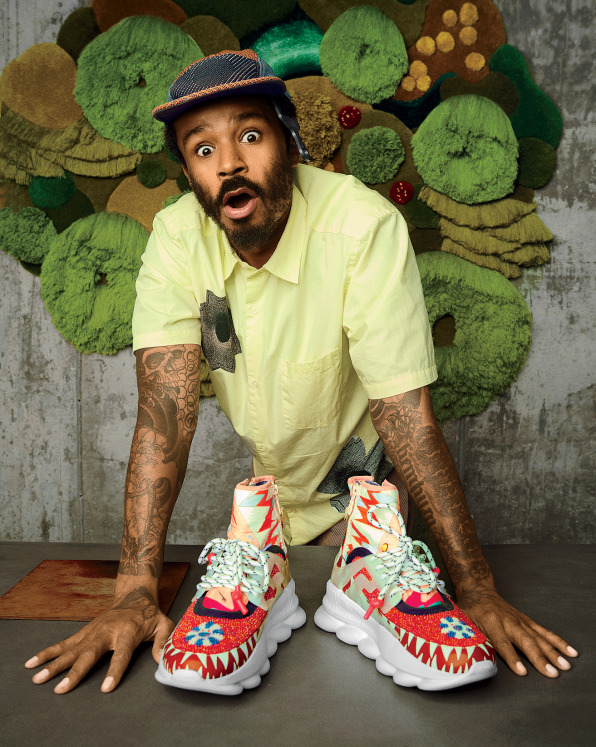
When Bembury first met with Joe Grondin, New Balance’s senior manager of global collaborations, Bembury impressed him with his distinct approach. “He worked backward,” says Grondin, recalling their work on what became 2020’s Peace Be the Journey. “He had the whole storytelling campaign, in-store merchandising, rough materialization, and color palette—everything about how he wanted to do it,” says Grondin. “But he didn’t have a shoe.”
Bembury went on to serve as the Yurt’s creative director, and he even designed its packaging, creating rich illustrations reminiscent of WPA National Parks posters for the brown paper shoebox—matching the style of his earlier collaborations with New Balance. Bembury makes many of his creative decisions quickly, choosing his colorways in minutes, but the Yurt took longer to develop because it required New Balance to break a mold. In a typical collaboration deal, shoe designers receive a onetime fee, but Bembury has negotiated ongoing revenue shares on several of his releases. “It’d be in poor taste to share numbers,” he says. “Kanye left Nike because they wouldn’t give him royalties, and the fact that I now receive them from multiple companies shows how the space has evolved.”
The Yurt’s whistle was actually inspired by a pair of Nike Vomero running shoes. Bembury owns two pairs of this particular model, a collab with the ready-to-wear luxury brand A-Cold-Wall, which features a large plastic block on the heel. While Bembury was attracted to the design aesthetic, he was bothered that the heel chunk was purely decorative. As he thought about what he’d do instead, he cut a hole in an old New Balance, stuck in a whistle, and hot glued it in. To pitch it to the New Balance team, he pulled out his homemade shoe in the boardroom, blew into it, and instantly sold the idea.
I mention to Bembury at the Rose Bowl Flea that the Yurt appeared to be a response to Nike’s work. By giving the Vomero purpose, he offered the world’s largest sneaker company a sort of correction.
Bembury is amused by the idea, and a little dismissive. But hours later, as we cruise back to L.A. in his car together, he returns to it.
“I think it’s interesting how you thought . . . you saw [the Yurt]as, like, an edit,” he says.
“Do you not?” I ask.
“But then, could you say that Pollex was an edit of the Foam Runner?” Bembury asks. “Because I thought that was the start of the conversation.”
Nike. The road untraveled. If Bembury always dreamed of working for Nike, why wasn’t he working with the company now? He has been asked this question countless times over the years but only recently had an experience that enabled him to formulate a proper answer.
Months ago, Bembury says he was invited to Nike’s secretive Innovation Kitchen, the design lab run by Tinker Hatfield, the company’s iconic sneaker designer. He was offered an opportunity to work together. The keys to the kingdom? Not quite, he says, but “very attractive keys.” Nike declined to comment on the offer.
Bembury brought his visitor’s pass home with him to keep as a memento. “I framed it in the most obnoxious, ornate gold frame. When I sent it in to get framed, that represented the day that I accomplished the thing I most wanted in my entire life,” he says. “But then, seven weeks later, when I got it back? It represented the day that I accomplished the thing I’ve wanted my entire life that I didn’t take—which almost made [the pass]that much more powerful.” Ultimately, Bembury wanted to preserve his rare role as an auteur in shoe design, and New Balance felt like the better partner for that than Nike.
Remembering that moment, Bembury says, “If anyone ever told me that Nike would offer me attractive keys at 36 years of age and I would tell them no, I would put all my money on the fact that I would say yes. It just shows you that growth is real, and you can gain perspective.”
After Bembury and I leave the Rose Bowl Flea, we head to his cool concrete design studio, hidden inside a faceless building in L.A.’s fashion district. Near the front door is Bembury’s wall of inspiration, which includes cubbies filled with his greatest hits and his collection of pop art objects like Be@rbricks. Bembury doesn’t waste any time in finding a home for the Shaq shoe for which he gleefully paid $75. In one smooth motion, he elbows one piece out of the way to give his white leather trophy a prominent spot.
In a digital world—and yes, Bembury shared his purchase with his Instagram followers in near real time—Shaq’s shoe pops off the screen in the same spirit as Bembury’s designs, urging viewers to touch the textures, don his garments, go outside. His fans actively seek out adventures in which they can feature their Bembury-designed shoes. His New Balances pose in the overhead bin of a plane; his Crocs hang lazily off a kayak near a teacup-size island; his webby hiking shoes for Anta sit on a stump next to a campfire in Quebec’s Opémican National Park. These are only a few examples, all posted within a single 24-hour period during Paris Fashion Week in June, as Bembury fans swarmed the streets near his Crocs pop-up store.
If Bembury is most proud of anything, it’s the actions that his creations inspire. “I guarantee you the products that I have made have positively affected people’s lives,” he says, “in regards to their relationship with nature and provoking [people]to explore the park in their neighborhood.”

That direct connection with his audience drives Bembury to continue betting on himself rather than work full time for anyone else. “I’m just riding a wave, a very unexpected wave,” he says. Spunge, which Bembury started as a kick-around brand to launch whatever he wanted, signifies “the most valuable thing you can be . . . a sponge constantly absorbing.” It quietly became a $4-million-a-year business last year, with virtually no promotion. (Its Instagram feed has accrued 40,000 followers despite having never shared a single post.) As he plans a serious expansion of his label this year, Bembury tells me that he will be opening a second studio just two blocks from his own—a spot he casually calls the Spunge Space before chuckling at his own alliteration and instantly declaring that the official name. He also plans to hire a five-person staff for the first time.
Bembury is loosely modeling Spunge on the late designer Virgil Abloh’s label Off-White. Abloh released his own products, collaborated with powerhouse brands including Nike, Ikea, and Evian, and served as men’s director at Louis Vuitton. Likewise, Bembury leverages Spunge for his shoe collabs: He recently released three new Vans, plus apparel he designed, on Spunge. As his fans sign up to be notified of the latest drops, he can also introduce them to even more of his work. “There’s an opportunity for people of color in the outdoors, there’s an opportunity for females in the outdoors. That can translate into homeware,” Bembury says. A few weeks before we met, he released a pillow in collaboration with the designer Alex Proba. (It immediately sold out.) For one of his Crocs releases, he created a plant pot inspired by the Pollex design—literally molding clay the way he has fashioned foam for footwear—and distributed it in the friends-and-family packs Crocs sent out to build buzz.
The planter wasn’t on Spunge, but it reveals the blueprint for his thinking. “It’s almost like I want to get my Black Martha Stewart on,” he says. “I want to get my Black REI [on].” But Bembury does not want to be considered a designer with a Black asterisk. “With the types of people that I cast and the aesthetic of everything, you will know it is Black-owned, but that is not going to be the messaging.”
At 7 a.m. on a Monday morning, the day after the Rose Bowl Flea, I wait for Bembury near the trailhead of one of his favorite short hikes in L.A., holding the one thing he told me to bring: a large bottle of water. The sky is gray, and a chilly moisture hangs in the air, taunting the succulents. He hops out of his car and slips on a new pair of hiking shoes he’s about to drop for Brandblack, with a heat-welded upper that reminds me of tree frog toes.
Bembury darts up the path with practiced footing, but he’s still pushing himself, carrying on a conversation while climbing. For the first time, I see him sweat; a bead drops right off his nose into the dirt.
Bembury hikes alone in the service of his health and creativity. He hikes with other people to try to get to the heart of the matter. At this moment, it’s his limited partnerships with Versace and Moncler, which he still feels don’t reflect the attention he deserves from capital-F fashion. “I think what I said [yesterday], about what I’ve accomplished in high fashion single-handedly, and then not really getting any looks in high fashion, is relevant. I don’t like being a race-baiting person or [saying that]if I don’t receive an opportunity, that’s automatically racism. I’m not saying that. But that has been very interesting to me,” he says. “I know other people who have done a shoe in an insignificant situation, and all of a sudden, they’re at Balenciaga! But then me, [at Versace]I literally created a business at a fashion house. I gave them cultural moments. There’s a fucking laundry list of things that I did there—by myself. And for me not to have gotten any calls or opportunities in that space [afterward]? It just makes me raise my eyebrow like 10 heads high.”
Reaching his meditation spot on the summit, Bembury stands overlooking the grand view of L.A. He could be a character in a Salehe Bembury ad, his eyes focused toward his next adventure. Whatever he was sweating has already soaked into the dusty trail. The earth. His sponge.
—
This article first appeared in www.fastcompany.com
Seeking to build and grow your brand using the force of consumer insight, strategic foresight, creative disruption and technology prowess? Talk to us at +971 50 6254340 or engage@groupisd.com or visit www.groupisd.com/story

